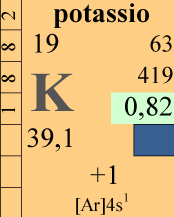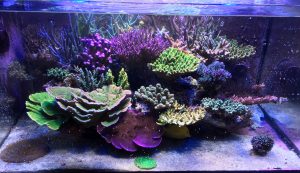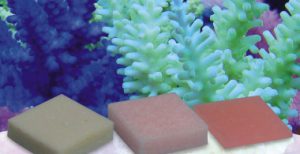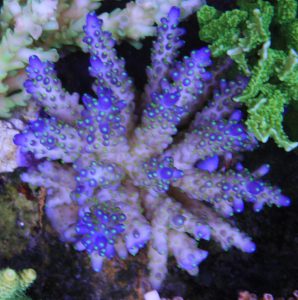Potassium is a key element for marine tanks and is fundamental for stony corals. His concentration should be between 380 and 450 mg/l with an optimum of 400 mg/l, the value we find in natural salt water. As for many other elements, potassium is used in both coral skeleton and cellular processes, furthermore it is used by zooxantellae for which it is a fertilizer, like common vegetal cells.

I want to clarify that potassium, unlike elements such as calcium, is not strictly limiting for coral life, indeed a lack of potassium is not dangerous until it reaches very low values. Calcium under 350 mg/l can be fatal to more sensitive corals, but potassium values under 200 mg/l can be tolerated by most coral species. Furthermore the symptoms of the lack of potassium are extremely diverse and nonspecific.
Now let’s try to understand why, despite this apparent tolerance of corals toward potassium concentration, it is fundamental for successfully breed corals, both soft and stony. In my opinion we should focus on 4 main points:
1- potassium is involved in many physiological processes that take place in coral cells, however the total amount of potassium in cells is so little that it is non affected by water concentration.
2- potassium is used as a component in the construction of skeleton, however the percentage is modest if compared to calcium.
3- potassium is fundamental for the metabolism of zooxantellae because directly involved in the biosynthesis of glucose through photosynthesis.
4- potassium can stimulate chromoprotein synthesis in the coral tissue, the mechanism it is not fully clear but the most accredited hypothesis is that potassium has a role in the transcription of chromoprotein genes. Another thesis is that corals can perceive potassium concentrations and use this datas to regulate the expression of chromoproteins.

As I mentioned, potassium shortage symptoms are diverse and can be confused with ones caused by other shortages or excesses, let’s see the main:
– poor or not homogeneous growth
– pail color or tissue bleaching, enhanced in shade zones
– tissue necrosis, usually from bottom to tips
Conversely a potassium excess is very easy to recognize, for both the speed of symptoms appearance and their severity:
– tissue necrosis only on the tips, with an effect of peeling, we can notice small tissue flaps around a bare skeleton zone, otherwise growing tips show a dried-up look called burned tips.
– marked darkening of the whole tissue, including grow tips, due to the intense zooxantellae proliferation
– general slowdown in growth
We can find lot of potassium colorimetric tests, similar to calcium tests. In my opinion they are effective but not essential, since a good and experienced aquarist who manages a bacterial reproduction based tank, should easily check average potassium values only observing gauge corals. Personally I always keep an Acropora Valida tricolor in my tanks, since it is useful as potassium indicator: in its best coloring it has white branches with intense violet terminal tips and small acid green polyps. With low potassium we can observe a reduction and opacity of violet tips, while in case of excess we observe a fast darkening of white branches, sign of a huge zooxantellae proliferation.
Finally a fast view on main potassium integration systems: the fastest and safest method consists in liquid supplements prepared with potassium sulfate/chloride/hydroxide or potassium gluconate. Integrations can be weekly but the best solution is a daily dosage that ensures maximum stability. We can find an effective help in automatic dosing systems that ensure constant and precise dosage. Recently we can find also slow-release tablet supplements that ensure a constant dosage for about a month, the best example of this new technology is Korallen-Zucht’s automatic elements.



[…] For further informations about boron you can read the dedicated article. […]